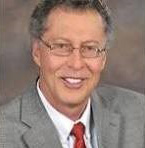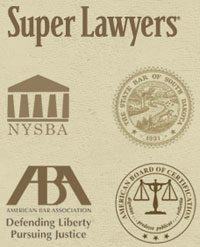The EPA defines a brownfield as “real property, the expansion, redevelopment, or reuse of which may be complicated by the presence or potential presence of a hazardous substance, pollutant, or contaminant.” The Comprehensive Environmental Response, Compensation, and Liability Act (CERCLA) mandated that the purchasers of property are liable for any contamination on this property regardless of when they acquired a site. However, CERCLA also created a defense known as the “innocent landowner defense” that can only be used if “appropriate due diligence” was conducted prior to the acquisition of the property. Appropriate due diligence has been exercised if an environmental site assessment (ESA), a thorough investigation of a site’s current and previous owners, has been prepared.
ESA’s have an average cost of about $4,000 for a small business acquisition and can vary depending on variety of factors specific to the job. The typical businesses that leave behind brownfields include gas stations, dry cleaners, railroads, oil refineries, liquid / chemical storage facilities, and steel / heavy manufacturing plants. Typical hazardous materials they leave behind include hydrocarbons, solvents, pesticides, heavy metals such as lead, and asbestos.
What is so dangerous about leaving these brownfields alone? Many of these brownfields are abandoned commercial properties and tend to be an eyesore in the community. Not only can this lead to decreased property values in surrounding neighborhoods, but the property can also pose serious health risks for new tenants and their neighbors.
Once a brownfield has been identified, the EPA provides two options for cleanup, revolving loan fund grants and cleanup grants. The purpose of revolving loan fund grants is to enable states, political subdivisions, and Native American tribes to make low interest loans to carryout cleanup activities at brownfields properties. Cleanup grants provide funding for a grant recipient to carry out cleanup activities at brownfields sites.
Since the cost of cleanup is considerable, the grants may provide several hundred thousand dollars towards the cost of cleanup. This money comes with strings attached, of course. Among other things, the costs are shared with the property owner, by at least 20 percent, and the brownfield site must be cleaned up within a three-year period.
Entities eligible for the EPA’s brownfield grants and loans include state, local and tribal governments; general purpose units of local government, land clearance authorities or other quasi-governmental entities; regional council or redevelopment agencies; states or legislatures; or nonprofit organizations. If you are not an eligible entity, you may still be able to receive assistance through your state or city.
In South Dakota, the agency that provides statewide brownfield assistance is the Department of Environment & Natural Resources (DENR). DENR receives funding from the EPA for assessments and cleanup and have discretion in how to allocate those funds. For example, a national hotel chain looking to redevelop a brownfield site in South Dakota would not be eligible to apply for assistance through the EPA directly. However, the hotel chain could contact DENR for assistance and DENR could use their funds to perform an ESA or help with the cleanup.
In 2015, Sioux Falls received an assessment grant for $400,000 from the EPA. In addition to performing site assessments, they plan to use the money to update the city’s brownfields site inventory, prioritize sites, plan for cleanups at priority sites, and perform community outreach activities. They, like DENR, also have discretion in performing assessments and have made assessments available to entities who would not be eligible to apply for grants from the EPA.
With these options available to assist with brownfield redevelopment, why do so many brownfields remain untouched in South Dakota? In the last 5 years the EPA only awarded four grants in South Dakota. They gave an assessment grant to Sioux Falls and cleanup grants to Standing Rock Sioux Tribe, Cheyenne River Sioux Tribe, and Lower Brule Sioux Tribe. This suggests that other entities are not aware of the grants available to them, they are dissuaded from applying, or they do not have the structure to run a brownfields program.
Since South Dakota is not small Rhode Island, which is about the size of Brown County, businesses and other eligible entities find it is more economical to buy available land than it is to redevelop a brownfield site. This misses the mark. A brownfield site is many times in an attractive location. A brownfield site is often close to business activity and transportation or the prior owner would not have developed it.
Although the grants and other forms of assistance are “competitive,” grants are awarded based on guidelines. The deadlines for applying for assessment and cleanup grants from the EPA is December 20, 2016, so it’s not too late.
View the original article at FarmForum.net





